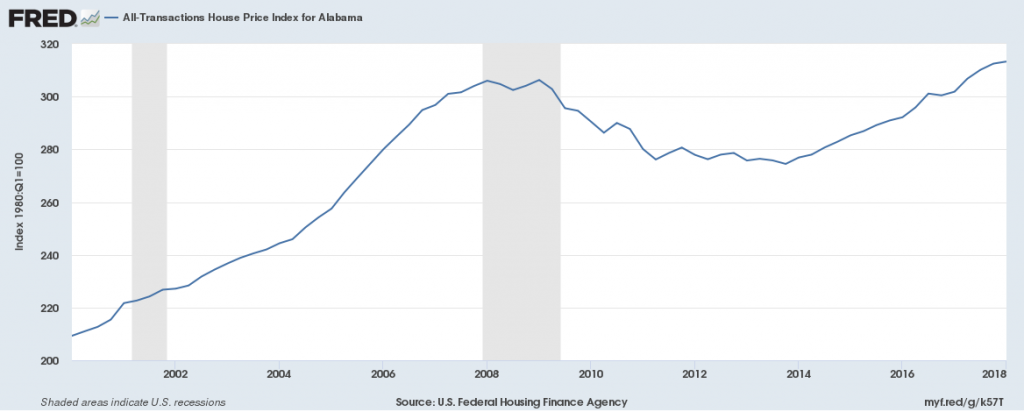Gross Domestic Product
Real GDP (a measure of economic growth) has been increasing since 2009 from the most recent low of $168 billion. It has been growing since then and was at a high of $184 billion in 2017.
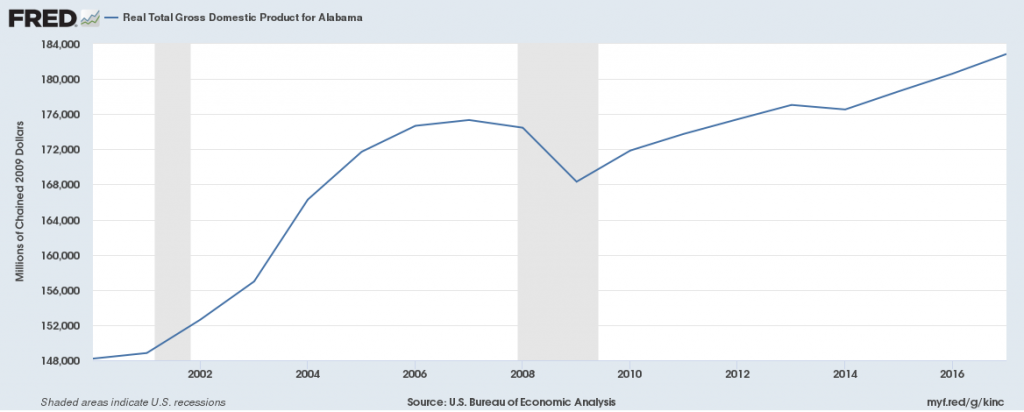
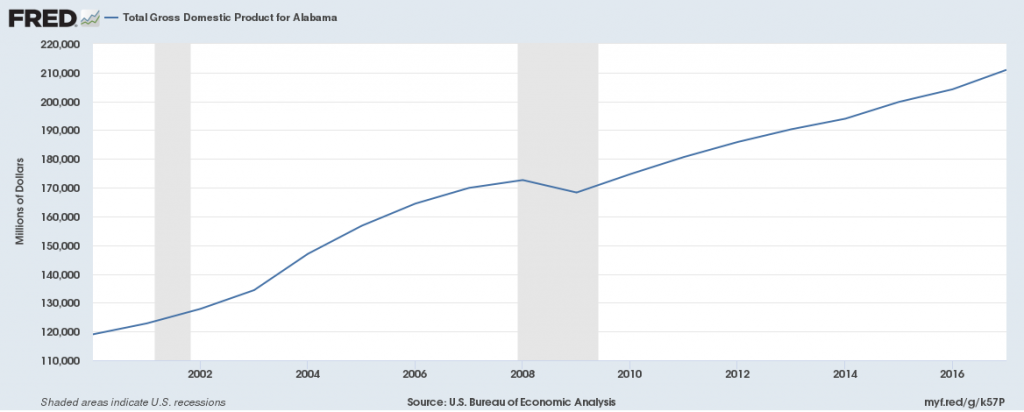
Jobs
Private-sector employers have added 166,000 jobs since 2010, the national low point for private-sector employment. From 2017 to 2018 the private sector has added approximately 20,000 net new jobs, putting it at the pre-recession high of 1,640,000 total jobs. Average hourly wages in the private sector have been slowly increasing since 2013, going from $20/hr to $23.25/hr in 2018.
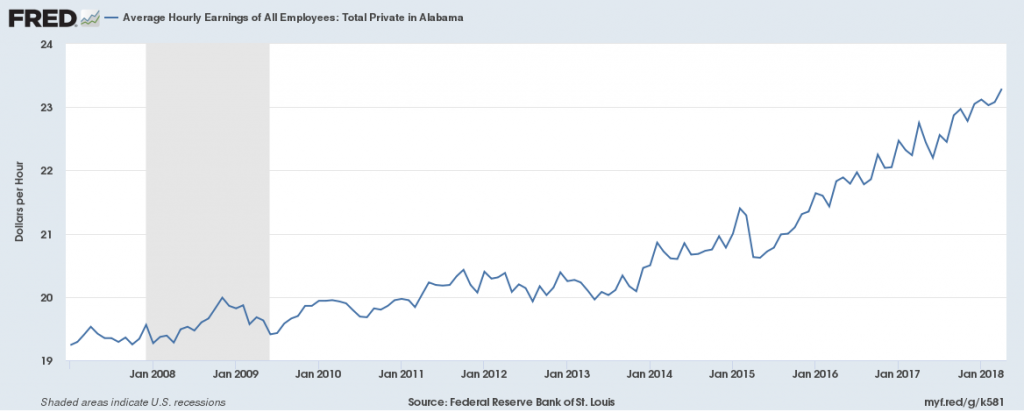
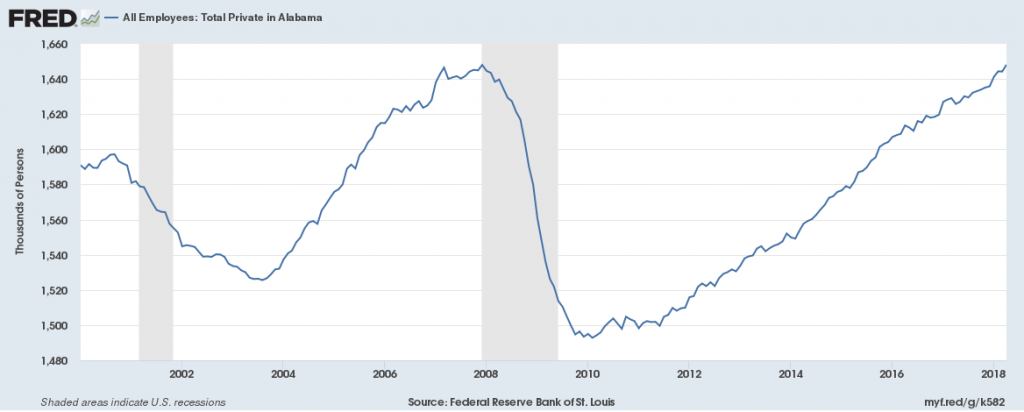
Manufacturing employment has been declining since 2000, especially during the 2008 recession, but has been growing slightly since then. There are 262,000 jobs in this sector in 2018, down from 355,000 in 2001. Average hourly wages of production employees have been increasing since 2011, going from approximately $16/hr in 2010 to $19.50/hr in 2018.
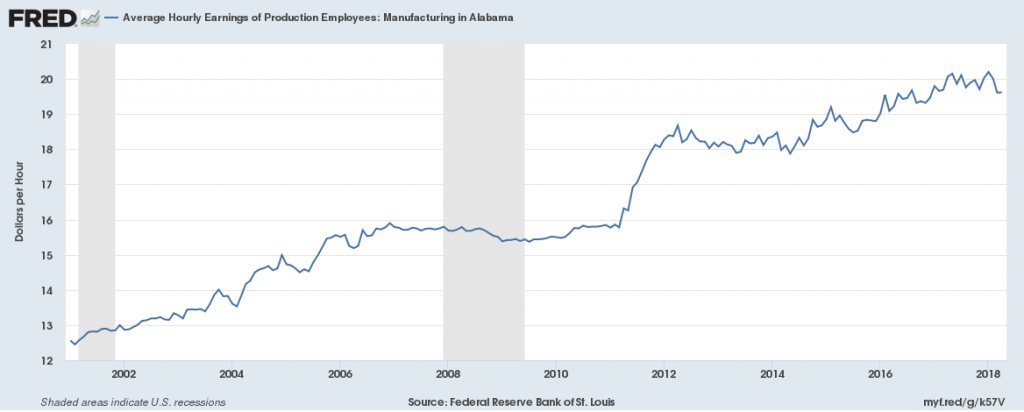
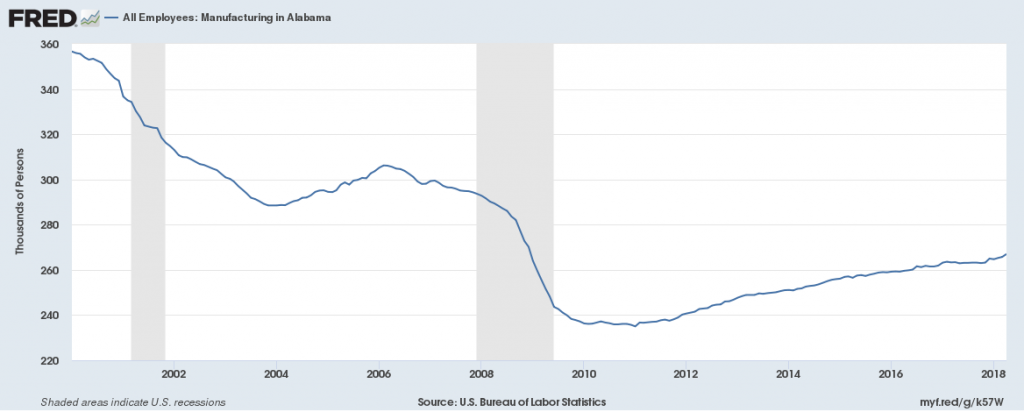
There were 61,000 jobs in the Transportation, Warehousing and Utilities sector in 2018, 11,000 jobs above its 2010 low, showing a recovery in this sector. The average wage in the Transportation and Material Moving occupations was $19.70/hr in 2018, up from a 2010 average of $17.25/hr.
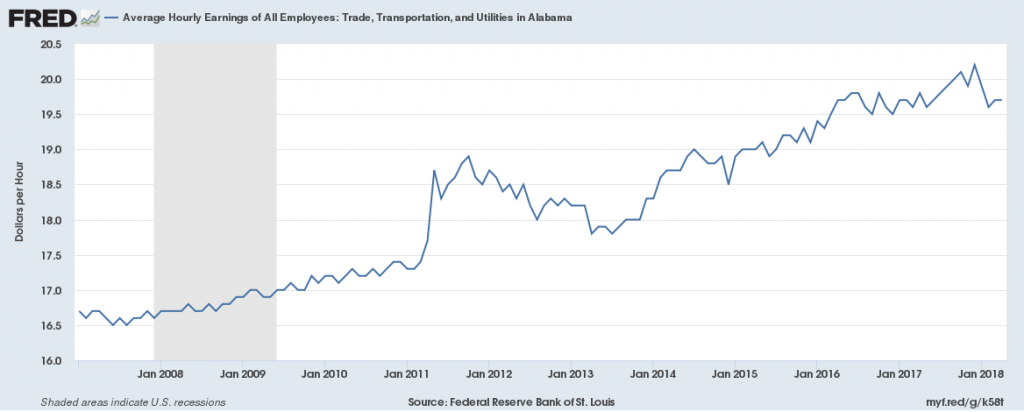
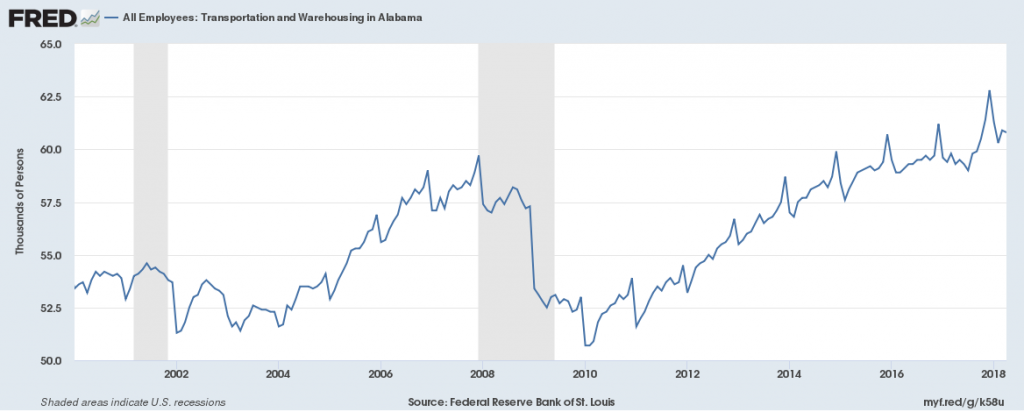
Unemployment
The unemployment rate in 2018 is 3.9%, down significantly from the prior year’s 6% rate. This is the national average of 3.9% unemployment.
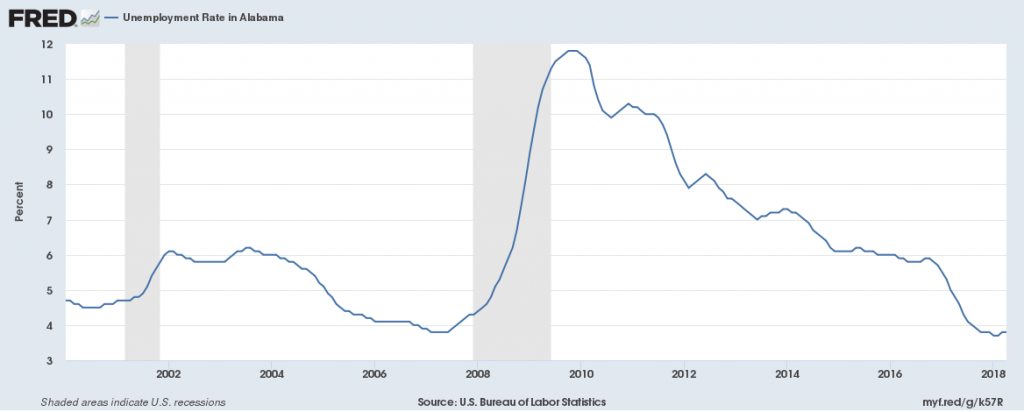
Housing
The House Price Index, a measure of the cost of housing, declined from its 2007 high of 305. It has been increasing since 2013, hitting 310 in 2018, showing growing housing costs.
